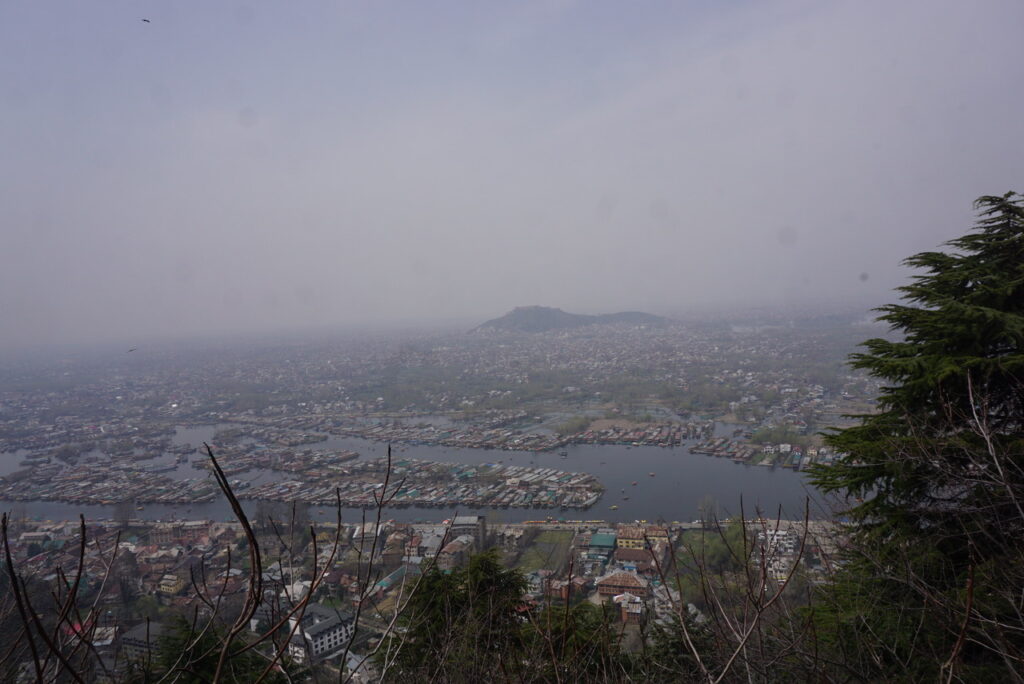Respect an ordinary Kashmiri as your own.
by Shome Basu
Kashmir remains the biggest miscarriage of the partition even though the simmering communal tension goes beyond 1947. It goes back decades when the Maharaja – who was a Dogra Rajput – along with his nobles, consisting of Kashmiri Pandits, somehow kept the Muslim population out of the statecraft. It was the Dogras and the Pandits who dominated and created hegemony in the large state of Jammu and Kashmir which was predominantly a Muslim state.
The rise of Reading Room, Round Room (from the Dastagir Sahib shrine) and Jamia Masjid in the downtown Srinagar ruled the streets of Kashmir since the 1931 awakening. It may sound a bit complex but from the pre-partition politics of Kashmir being an “independent country” till its accession with India, the political tensions and the dominance of independent political ideas has remained the same although not linear.
When the Mughals tried to conquer Kashmir by sword in the late 16th Century, they couldn’t breach its natural mountainous boundaries. They then tricked Yousuf Shah Chak to come to Delhi, where he was taken prisoner and sent into exile. The Afghans that followed the Mughals ruled by the sword but could not gain any sympathy. Sikh rule under Ranjit Singh had a similar pattern. The British, who defeated the Sikhs in the Anglo-Sikh war, handed Kashmir to Gulab Singh for Seventy Five thousand Nankana rupees. Since then the communal gap increased till it exploded in 1931 when a Pathan named Abdul Qadir gave some rousing speech at Srinagar’s Jamia Masjid and was arrested by Maharaja’s troopers.
While Qadir’s speech was still fresh, Maharaja’s police stopped namaz prayers in Jammu which created a huge resentment among the people of the state. The protests in Kashmir were crushed by the Maharaja’s soldiers who fired bullets on the protesting crowds and killed twenty-one people. Muslim Conference was formed and Sheikh Abdullah emerged as a formidable leader. Abdullah later tried to make it a pan-Kashmir party with a more secular look and renamed it as National Conference.
The partition took its own course of communal violence but Kashmir was still an independent country with a standstill agreement signed between J&K and Pakistan while negotiations were underway with India. Meanwhile, a massacre of Muslims in Poonch by the Hindu-dominated armies of Maharaja led to an attack by tribesmen of Federally Administered Tribal Areas (FATA). As the tribal army marched across swathes of Kashmir, Maharaja Hari Singh took away the rifles which were given to Muslim policemen. It created more resentment among the Muslims.
The maharaja asked military assistance from India which New Delhi responded to politically. If there were to be boots in Kashmir, signing the instrument of accession was a must. Maharaja tried to stay aloof from both Pakistan and India and along with his Prime Minister Mehr Chand Mahajan tried to play diplomatic games.
The geography of Jammu, Kashmir and Ladakh happens to be on the lap of Pir Panjal mountain range. The state has diverse climatic conditions and rough terrain with mountain passes frozen for half the year. For India, it was quite difficult to pass the steep Banihal pass and the old Mughal road via Haji Pir pass was treacherous for lorries and people. Instead, Pakistan’s Punjab had better road connectivity, and even rail connectivity. Railhead from Sialkot to Jammu city station was a route for commuters especially for people with business and family connections who travelled since British India days.
Another all-weather road was from Rawalpindi (via the land where Islamabad was built much later in the ‘60s) to Murree hills, Abbottabad and Muzaffarabad to Baramulla and to Srinagar which happened to be the quintessential valley. Most of the grocery and other consumer items, even during British rule and later, came from the all- weather roads which became part of Pakistan’s Punjab. The land route from India was difficult and dangerous. Manali to Leh to Zanskar Valley was a difficult route and the Zoji-La remained frozen for more than half a year. To trust those roads for ration and commodities like wheat, rice and fuel was too risky.
The size of the kingdom of Jammu & Kashmir after the treaty of Lahore in 1846 was huge. It was located in the heart of Asia and its wings touched with central Asia in the north and the northern Indian plain in the south. The size of Jammu and Kashmir, as it existed at the time of India’s partition, was no match with any princely state that were under the dominions. Jammu and Kashmir was of the size of Belgium, Denmark, Holland and Luxemburg. The state then bordered China in the East (Xinjiang and Tibet), Afghanistan via Wakhan corridor in the North-West and USSR with its 30 odd-kilometer border in the extreme north.
With the accession and the war in 1947 which continued till 1948, India went to the United Nations and a ceasefire line was drawn. Not much changed after that because as per the referendum procedures, Pakistan had to move all its armed forces first and then India too had to reduce its forces following which a referendum for right to self-determination could have taken place. Both parties never bothered on that and more wars broke out. Operation Gibraltar, a limited-scale operation by Pakistan, failed and resulted in a bigger war in 1965. In 1999, Pakistan initiated Operation Koh Paima in which non-state actors and Pakistani regulars took control of the vacant peaks in Kargil region and attempted to make the Indian movement of supplies to Ladakh and Siachin impossible. Artillery shelling broke out and close mountain warfare was unleashed by Indian forces to take back control of the peaks. Much of it was secured by India and Pakistan’s COAS Pervez Musharaf, who seized power in a military coup, later came to New Delhi with a four-point formula which failed at the Agra Summit in July of 2001. By December 2001, Jaish-e-Mohammed militants attacked the Indian parliament and India was not shy to unveil the Cold Start Doctrine.
The relations between India and Pakistan never became better, though trade and people exchange went on as Srinagar-Muzaffarabad trade link was inaugurated by then-prime minister Dr. Manmohan Singh in 2005 which again got hindered with attacks in Mumbai by Lashkar-e-Toiba on 26 November 2008. India’s relationship with Pakistan again went back into a freeze.
With the BJP coming to power in 2014, Prime Minister Narendra Modi landed in Lahore to attend the wedding of Pakistan Prime Minister Nawaz Sharif’s granddaughter. Till then the story was going good with India’s then-foreign minister Sushma Swaraj meeting her Pakistani counterpart Sartaj Aziz at the Heart of Asia conference. With the militant attacks that followed in Nagrota, Pathankot and Uri, the talking process totally collapsed. India took a stand that ‘terrorism and talks cannot go hand in hand’.
In 2019, India made an ambitious move by trying to carry out surgical strikes against what it called the militant camps inside Pakistan in response to Pulwama suicide attack. Pakistan responded with swift aerial dogfights, first in five decades, resulting in loss of India’s MIG21-Bison fighter aircraft and capture of its pilot.
Months later, came 5 August 2019 and New Delhi abrogated Articles 35A and 370, ending the seven-decade-old semi-autonomous status of Jammu and Kashmir.
New Delhi might make lofty claims but an unjaundiced eye can clearly see it hasn’t been able to win the hearts and minds of the people of Kashmir. That is only possible through love and a durable peace. New Delhi will have to stop viewing Kashmiris with suspicion. They deserve to live in a fear-free atmosphere as rest of the Indians do. They need demilitarization. They don’t want their children to grow with bunkers, checkpoints and gun-totting security forces all over the place. Since Kashmir’s semi-autonomy was annulled on August 5, 2019, AFSPA needs to go. There should be no impunity for erring soldier when it comes to human rights. Kashmir needs a robust intelligence grid but it should give people relief rather than becoming a problem for them.
And as democracy demands, free and fair elections should be the only way to rule and that too through Kashmiris themselves. Last but not the least, love and respect an ordinary Kashmiri as your own. That is the only way to win their hearts and minds.
Shome Basu is a Delhi-based senior journalist.


